
Guy Gavriel Kay is a Canadian writer of fantasy fiction. The majority of his novels take place in fictional settings that resemble real places during real historical periods, such as Constantinople during the reign of Justinian I or Spain during the time of El Cid. Kay has expressed a preference to avoid genre categorization of these works as historical fantasy. As of 2022, Kay has published 15 novels and a book of poetry. As of 2018, his fiction has been translated into at least 22 languages. Kay is also a qualified lawyer in Canada.
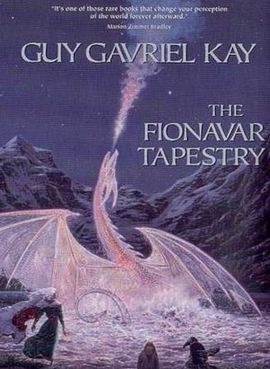
The Fionavar Tapestry is a book series of fantasy novels by Canadian author Guy Gavriel Kay, published between 1984 and 1986. The novels are set in both contemporary Toronto and the secondary world of Fionavar.
A strong element in contemporary Canadian culture is rich, diverse, thoughtful and witty science fiction.

The Lions of Al-Rassan is a historical fantasy novel by Canadian writer Guy Gavriel Kay. It is set in a peninsula of the same world in which The Sarantine Mosaic and The Last Light of the Sun are set, and is based on Moorish Spain. The novel concentrates on the relationships between the three peoples: the Kindath, the Asharites, and the Jaddites, although the religions of the Kindath, Asharites, and Jaddites, as described in the novel, bear no relation to Judaism, Islam, and Christianity.
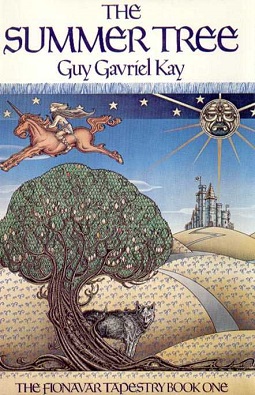
The Summer Tree is a 1984 novel written by Canadian fantasy author Guy Gavriel Kay and the first novel of The Fionavar Tapestry trilogy.

In many works of modern fantasy, elves are depicted as a race or species of pointy-eared humanoid beings. These depictions arise from the álfar of Norse mythology influencing elves in fantasy as being semi-divine and of human stature, whose key traits are being friendly with nature and animals. However, this differs from Norse and the traditional elves found in Middle Ages folklore and Victorian era literature.

Ysabel is a fantasy novel by Canadian author Guy Gavriel Kay. It was first published in January 2007 by Viking Canada. It is Kay's first urban fantasy and his first book set outside his fantasied Europe milieux since the publication of his first three novels in the 1980s. Kay lived in the countryside near Aix-en-Provence, the setting of Ysabel, while he wrote it. The story tells of 15-year-old Ned Marriner who discovers his magical heritage while staying with his photographer father in Provence. He meets an American exchange student, the two become involved in an ancient "story" of love, sacrifice, and magic unfolding in the present day, which draws in Ned's family and friends.

The Last Light of the Sun is a 2004 fantasy novel by Canadian writer Guy Gavriel Kay. Like many of his books, it is set in a world that draws heavily upon real times, events, places and people. In this particular book, the period is the Viking invasions of Saxon England. The story concerns a young Erling's attempt to prove himself as a warrior, his father's attempts to make amends for his mistakes, a young prince searching for revenge and a King's attempt to transform his realm into a more civilized one that will resist attacks from the Erlings forever. The books main themes are revenge, violence, the passing of an era, clash of cultures, and love, especially between father and son.
Janeen Webb is an Australian writer, critic and editor, working mainly in the field of science fiction and fantasy.
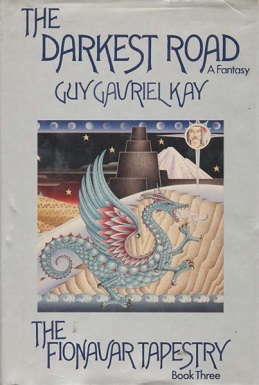
The Darkest Road is a 1986 fantasy novel by Canadian fantasy author Guy Gavriel Kay and the third and final novel in The Fionavar Tapestry trilogy. It follows The Summer Tree and The Wandering Fire.

The Jewel in the Skull is a fantasy novel by English writer Michael Moorcock, first published in 1967. The novel is the first in the four volume The History of the Runestaff.
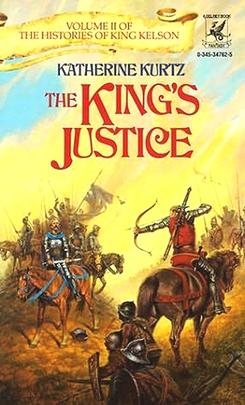
The King's Justice is a historical fantasy novel by American-born author Katherine Kurtz. It was first published by Del Rey Books in 1985. It was the eighth of Kurtz' Deryni novels to be published, and the second book in her third Deryni trilogy, The Histories of King Kelson. Although The Legends of Camber of Culdi trilogy was published immediately prior to the Histories trilogy, the Histories trilogy is a direct sequel to Kurtz' first Deryni series, The Chronicles of the Deryni.
Mel Odom is an American artist who has created book covers for numerous novels, including a number of paperback editions of the novels of Patrick White, the Australian winner of the Nobel Prize for Literature, and several books by fantasy author Guy Gavriel Kay such as The Fionavar Tapestry trilogy, Tigana, A Song for Arbonne, and The Lions of Al-Rassan. Dreamer, a collection of his work, with an introduction by Edmund White, was published by Penguin Books in 1984. Odom is also the designer of the Gene Marshall collectible fashion doll.

Personal Demon, a fantasy novel published in 2008, is the eighth book in the Women of the Otherworld series written by Canadian author Kelley Armstrong. It is the first novel in the series to have more than one narrator and the first to include a male narrator.

Under Heaven is a historical fantasy novel by Canadian author Guy Gavriel Kay. Kay's eleventh novel, it was published in April 2010 by Viking Canada. The work, set in a secondary world based upon Tang China, is a departure for Kay in that it takes place outside of a setting based on Europe or the Mediterranean. It recounts events based on the An Shi Rebellion. Under Heaven takes place in a completely new world, as seen by it having only one moon as opposed to the two moons normally present in Guy Gavriel Kay's works. In 2013 he published a second novel, River of Stars, set approximately 400 years later in the same world.
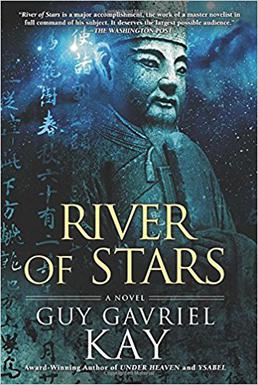
River of Stars, a historical fantasy, is the twelfth novel by Canadian fantasy author Guy Gavriel Kay. It was published in April 2013 by Roc Hardcover. It is Kay's second work set in an alternate history of China, taking place 400 years after his previous novel, Under Heaven. The novel is a fictionalized account of the Disaster of Jingkang and the beginning of the Jin–Song Wars during the Song dynasty.

A Song for Arbonne is a novel by Canadian writer Guy Gavriel Kay published in 1992. It is set in a fantasy world with two moons and is loosely based on 12th-century Provence and the Albigensian Crusade.

A Brightness Long Ago is a historical fantasy novel by Canadian writer Guy Gavriel Kay published in 2019 by Viking Press. It is inspired from the events of 15th-century Italy leading to the Italian Wars, and particularly the feud between Federico da Montefeltro and Sigismondo Pandolfo Malatesta.

Children of Earth and Sky is a historical fantasy novel by Canadian writer Guy Gavriel Kay published in 2016. It was the first novel he wrote after receiving the Order of Canada.
















